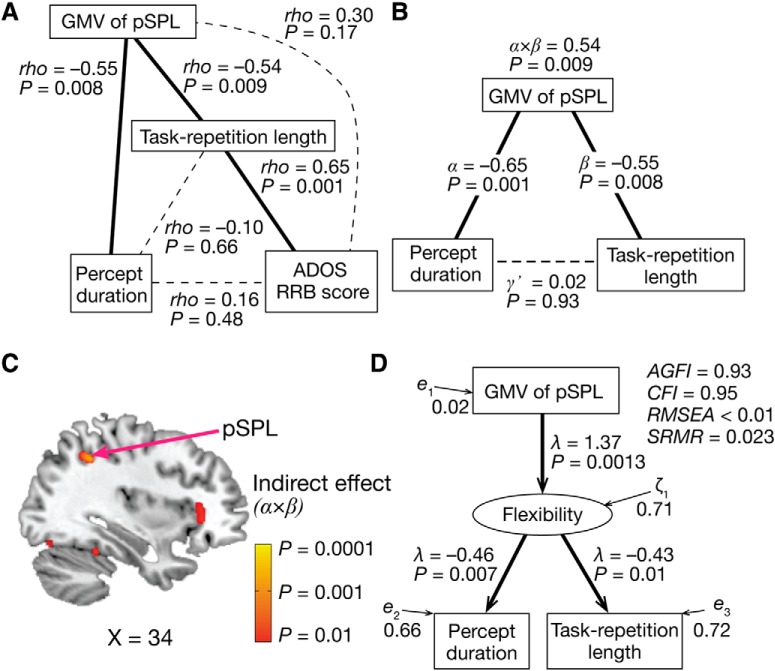Figure 7.
Brain–behavior associations. A, Partial correlation analysis implies that the smaller GMV of the pSPL in autism linked the perceptual overstability to the cognitive rigidity and, consequently, RRB symptoms. B, A nonparametric mediation analysis suggests that the smaller GMV of the pSPL would be a mediator linking perceptual stability to cognitive rigidity. This analysis used the median percept duration, GMV of the pSPL, and median task repetition length as an independent variable, mediator variable, and dependent variable, respectively. α indicates a regression coefficient of the percept duration on the GMV of the pSPL, and β denotes that of the GMV of the pSPL on the task repetition length. γ represents the direct effect of the percept duration on the task repetition length. α × β indicates the indirect effect of the percept duration on the task repetition length via the pSPL. C, Colored clusters are brain regions with GMVs that had significant indirect effects (α × β) in a whole-brain nonparametric mediation analysis with the same independent and dependent variables as in B. For presentation purposes, the statistic brain map adopted p = 0.01 as its threshold. A significant cluster was found in the pSPL (p = 0.0003 in [34, −52, 44] in MNI coordinates). D, A structural equation modeling analysis, in which domain general flexibility was introduced as a latent variable, indicates that the pSPL is related to domain general behavioral/mental flexibility and that the smaller GMV of the pSPL in autism would attenuate such flexibility and induce perceptual overstability and cognitive rigidity. Note that the arrows did not indicate causal relationships between the variables. λ, path coefficients; e and ζ, residual terms.

